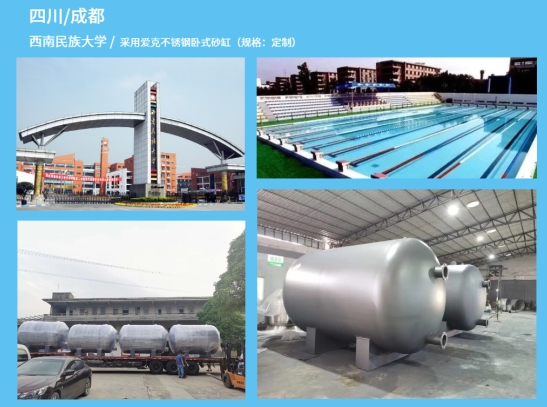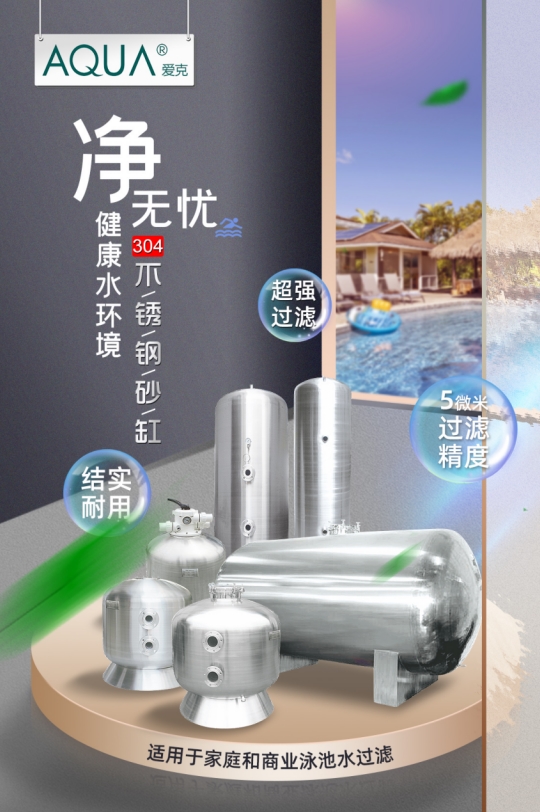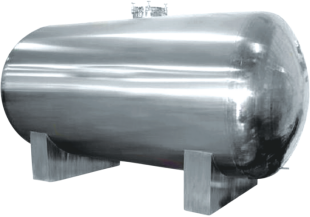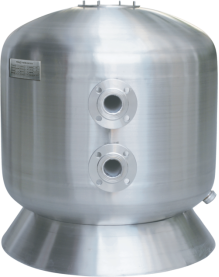(Edited on January 14, 2021)
Introduction to 304 stainless steel
304 stainless steel is a common material in stainless steel, with a density of 7.93 g/cm³, which is also called 18/8 stainless steel in the industry. High temperature resistance of 800℃, good processing performance, high toughness, and corrosion resistance. At the same time, 304 stainless steel is also a nationally recognized food-grade stainless steel. It is suitable for water treatment equipment, plate heat exchangers, corrugated pipes, household products, auto parts, medical appliances, building materials, chemistry, food industry, agriculture, ship parts and other fields.
Common labeling methods on the market include 06Cr19Ni10 and SUS304, among which 06Cr19Ni10 generally means national standard production, 304 generally means ASTM standard production, and SUS 304 means Japanese standard production.

For example, AQUA's stainless steel sand tank filter is made of 304 stainless steel, which has many advantages such as beautiful appearance, pressure resistance, no leakage, long service life, etc., and the material is made of food sanitary stainless steel, environmentally friendly and pollution-free, even if it is scrapped It can also be reused as scrap steel without polluting the environment. Importantly, it can also be customized according to actual needs.

Brief introduction of stainless steel sand cylinder market
In terms of market performance, the market for stainless steel sand tanks is rather chaotic. Sometimes, a lot of new companies will pop up in a year, but most of them are workshop-style and can't undertake large projects at all. And some small sand tanks that are even made often have small problems such as water leakage and trachoma. Some customers even reported that the stainless steel sand cylinders they bought back had been rusted for a few days. Later, it was discovered that it was a bad business who used 201 stainless steel to pretend to be 304 stainless steel to deceive customers. (201 contains high manganese and is easy to rust. 304 contains more chromium-nickel, and the surface is matte and does not rust. The most important thing is the different corrosion resistance. 201 has very poor corrosion resistance and low nickel content, so The price is much lower than that of 304.) This led to the impression that stainless steel sand cylinders are expensive and unreliable, but this is not the case. I am greedy to buy products produced by a small workshop at a cheap price, and naturally many problems will arise.
Advantages of AQUA stainless steel sand cylinder
Only stainless steel sand cylinders produced according to strict production processes like AQUA are of excellent quality and durability, because stainless steel materials are not easy to age and are very pressure resistant. Unless they are used improperly, stainless steel sand cylinders will hardly be damaged, and the cost performance is also very good. High, the key is that later use will be a lot less troublesome.

In fact, the main markets for stainless steel sand tanks are high-end swimming pools, water parks, and some hot spring projects. Especially in some large-scale projects, the diameter and height of sand tanks need to be strictly customized according to the size. For example, the difference between the style of stainless steel sand tanks in water parks and swimming pools is relatively large. For this reason, AQUA specially developed horizontal stainless steel that can be used in water parks. Sand tanks and double-layer horizontal stainless steel sand tanks satisfy both practicability and durability.

The AQUA brand has a production base of nearly 40,000 square meters, and the stainless steel sand cylinders produced have a strict technological process. Starting from the purchase of raw materials, all products will undergo water pressure testing before they leave the factory. Only the stainless steel sand cylinders produced under such conditions can be handed over to customers for use. However, there are many small workshops that do not have the production conditions at all, and they do not even use water pressure testing but use air pressure. If the air pressure test is used, it will be difficult to detect product problems, and the operating pressure is often not up to the true operating pressure. When the equipment is put into use, it is easy to cause water leakage and weld cracks. Therefore, when buying, be sure to look for authentic brand products, choose according to demand, and do not blindly pursue low prices, so as to avoid unnecessary losses.

The sand tank has a compact structure and excellent quality, which can be used for a long time. As long as it is used and maintained correctly, it is generally not a problem for more than ten years, and it can even be used for a longer time.
So, having said that, how to maintain the pool sand tank to last longer?
The following AQUA gives you the maintenance method of the sand tank:
1. The swimming pool sand tank should be used normally, and the circulation system should be used normally. Some swimming pools don't pay much attention to this, and the circulation system is left as a decoration and will not be opened once every six months. This is not only irresponsible for the water quality, but also detrimental to the circulatory system. If it is left unused for too long, it will cause problems with a component. For example, if the house is left unused for too long, it will be easily damaged.
2. Regular inspection, that is, regularly check whether the circulation system can be used normally, whether there is water leakage, sand leakage or other problems, whether the components are aging or malfunctioning, and if there are any, they must be repaired in time.
3. Clean regularly. If the filter system is used for a long time, a lot of impurities, grease and other dirt will accumulate in the sand tank and pipeline. These things accumulate and get stuck inside, which will affect the filtering effect of the system and even make the water quality worse. Therefore, in addition to regular regular backwashing, decontamination and cleaning should be carried out every six months or a year. These stubborn stains should be cleaned with professional cleaners and professional methods. The sand tank uses sand tank cleaning agent. Fill the sand tank with water, pour it into the sand tank cleaning agent and soak for about 24 hours, and then perform backwashing.
4. Regular replacement of quartz sand, quartz sand filtration is the most important step in water purification. Quartz sand is very important. Due to long-term work, the sand's ability to adsorb impurities will be weakened, resulting in large-area agglomeration, and the filtering effect will be reduced or even lost. Therefore, the quartz sand must be replaced once within 1-2 years of use.
